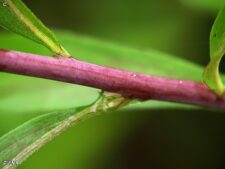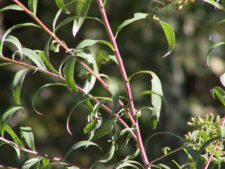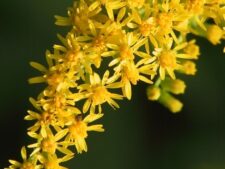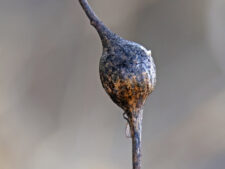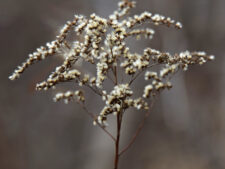
This native perennial grows to 6 feet and taller. The smooth stems are often purplish (B,C). Branches often arch or lean under the weight of its crowded, pyramid-shaped clusters of yellow flowers (panicles) which are aligned along one side of the stem (D). See comments for comparison with other goldenrod species.
Found on floodplains, wet ditches and other moist, sunny areas, flowering in August and September. Common on Fontenelle Forest floodplain. Less common at Neale Woods.
This is the Nebraska state flower.
Gilmore states goldenrod occupied an important place in the Omaha floral calendar as its flowering was synchronous with the ripening of the corn. When the they were on their summer buffalo hunt far away from their homes and fields and noted these goldenrods blooming, “they knew that the corn back home was beginning to ripen as well.”
Canada and Giant Goldenrod look very similar. Giant Goldenrod is best identified by its smooth, hairless, often purplish stem, which is usually arching. A close look at Canada Goldenrod, by far our most common species, will reveal stems that are covered with fine hairs. Both species can be found on the floodplain, but Canada is the only one likely to be found in drier upland locations. Two goldenrod species, both uncommon, are present in Neale Woods prairies. Prairie Goldenrod (Solidago missouriensis) has smooth, hairless stems, but flowers earlier and is less than 2 feet tall. Rigid Goldenrod (Solidago rigida) has distinctive flat-topped flower clusters.
The content of NatureSearch is provided by dedicated volunteer Naturalists of Fontenelle Forest who strive to provide the most accurate information available. Contributors of the images retain their copyrights. The point of contact for this page is: Neal Ratzlaff

 Identification
Identification